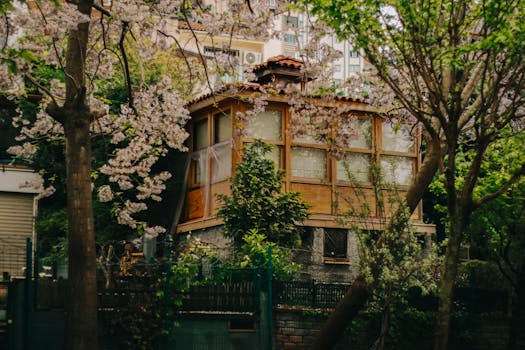
Urban Green Spaces: The Future of Outdoor Living in European Cities by 2025
Urban Green Spaces: The Future of Outdoor Living in European Cities by 2025 is becoming increasingly important as cities continue to grow and urbanize. Urban green spaces, such as parks, gardens, and green roofs, provide numerous benefits to both the environment and the people living in these cities. In this article, we will explore the importance of urban green spaces and how they are shaping the future of outdoor living in European cities.
Introduction to Urban Green Spaces
Urban green spaces are areas of vegetation and other environmental features within urban environments. These spaces can range from small parks and gardens to large green roofs and urban forests. Urban green spaces provide a range of benefits, including improving air quality, reducing noise pollution, and mitigating the urban heat island effect. They also provide habitats for wildlife, improve mental health and well-being, and offer opportunities for recreation and socialization.
Benefits of Urban Green Spaces
The benefits of urban green spaces are numerous and well-documented. Some of the most significant benefits include:
- Improved air quality: Urban green spaces can help to remove pollutants from the air, improving air quality and reducing the risk of respiratory diseases.
- Reduced noise pollution: Urban green spaces can act as a buffer against noise pollution, reducing the impact of traffic and other urban noise on residents.
- Mitigation of the urban heat island effect: Urban green spaces can help to reduce the urban heat island effect, which occurs when built-up areas absorb and retain heat, making cities hotter than surrounding rural areas.
- Habitats for wildlife: Urban green spaces can provide habitats for a range of wildlife, from birds and bees to larger mammals and insects.
- Improved mental health and well-being: Urban green spaces can have a positive impact on mental health and well-being, reducing stress and improving mood.
- Opportunities for recreation and socialization: Urban green spaces can provide opportunities for recreation and socialization, improving community cohesion and reducing social isolation.
Examples of Urban Green Spaces in European Cities
There are many examples of urban green spaces in European cities, each with its own unique character and benefits. Some examples include:
- The High Line in London: An elevated park built on an old rail line, providing a green space for recreation and socialization.
- The Luxembourg Gardens in Paris: A large park with gardens, fountains, and walking trails, providing a peaceful escape from the city.
- The Park Güell in Barcelona: A public park designed by Antoni Gaudí, featuring stunning architecture and beautiful gardens.
- The Prater in Vienna: A large public park with gardens, walking trails, and a famous Ferris wheel, providing a range of recreational activities.
Challenges and Opportunities for Urban Green Spaces
Despite the many benefits of urban green spaces, there are also challenges and opportunities that need to be addressed. Some of the key challenges include:
- Funding: Urban green spaces require funding to maintain and improve, which can be a challenge for cities with limited budgets.
- Space: Urban green spaces require space, which can be a challenge in densely populated cities where space is limited.
- Accessibility: Urban green spaces need to be accessible to all members of the community, including those with disabilities and limited mobility.
However, there are also opportunities for urban green spaces to be innovative and sustainable. Some examples include:
- Green roofs: Green roofs can provide additional green space in urban areas, while also reducing energy consumption and improving air quality.
- Urban agriculture: Urban agriculture can provide fresh produce to urban residents, while also reducing transportation emissions and improving food security.
- Community engagement: Urban green spaces can be designed and maintained by the community, providing opportunities for socialization and community engagement.
Conclusion
In conclusion, urban green spaces are an essential component of sustainable and livable cities. They provide numerous benefits to both the environment and the people living in these cities, and are shaping the future of outdoor living in European cities. By addressing the challenges and opportunities facing urban green spaces, we can create innovative and sustainable spaces that improve the quality of life for urban residents.






